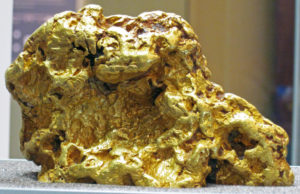Gold and Unrealistic Expectations: Why Gold Is Not an Investment
[ad_1]
Gold is often portrayed as insurance, a hedge against inflation, or a shield during times of social unrest and instability. Despite these attributes, many still approach gold as an investment. This perspective is flawed. Gold is not an investment—it’s a different kind of asset altogether.
Gold as an Asset, Not an Investment
When we analyze gold as an investment, comparisons are inevitably made to other investment vehicles like stocks or bonds. Some claim that gold’s performance is inversely correlated to stocks or that it struggles to compete with income-generating assets like dividend-paying stocks. However, these assumptions often lead to inaccurate conclusions.
For instance, one common argument against gold is its inability to pay dividends. Yet, the same criticism is rarely applied to growth stocks, which also do not pay dividends. Dividends, in essence, are partial liquidations of a stock’s value. Similarly, gold owners can sell portions of their holdings for income.
Interest Rates and Gold: Debunking the Correlation Myth
Another widespread myth is that gold prices correlate inversely with interest rates. This assumption suggests that as interest rates rise, gold prices fall, and vice versa. However, historical evidence contradicts this theory:
- In the 1970s, gold rose from $42 per ounce to $850 per ounce, even as interest rates surged.
- From 2000 to 2011, gold prices climbed from $260 to $1,900 per ounce while interest rates declined.
These periods demonstrate that the relationship between gold and interest rates is neither consistent nor predictive.
Unrealistic Expectations About Gold
Many investors approach gold with the same mindset as they do stocks, expecting short-term gains or dramatic price movements. Phrases like “gold will explode higher” or “gold collapsed today” dominate financial headlines. This narrative fuels unrealistic expectations, leading to disappointment when gold does not behave like a traditional investment.
Unlike stocks, whose value often reflects the growth of goods and services, gold’s value stems from its role as a stable store of wealth. Understanding this distinction is crucial for managing expectations.
Gold’s True Role: A Reflection of the US Dollar
To truly understand gold, one must examine its relationship with the US dollar. Gold is original money, and its value is intrinsically tied to the dollar’s purchasing power. Over the past century, the US dollar has lost 98% of its purchasing power, primarily due to inflation and Federal Reserve policies. Gold and Unrealistic Expectations: Why Gold Is Not an Investment
Gold’s price in dollars reflects this decline. While the dollar’s value erodes over time, gold remains constant in its purchasing power. What you can buy with gold remains stable, whereas the dollar buys less and less.
Gold and Global Events
Gold’s value is often mistakenly linked to world events, political turmoil, or industrial demand. While these factors may cause short-term price fluctuations, they do not determine gold’s intrinsic value. For example:
- During the Gulf War in 1990, gold prices spiked in anticipation of conflict but fell sharply once the bombing began. The price movement was tied not to the war itself but to the strength of the US dollar during the crisis.
Conclusion: Gold as Stability, Not Speculation
Gold is not an investment in the traditional sense. It does not generate income or produce goods and services. Instead, it serves as a reliable store of value, maintaining stability as currencies like the US dollar lose purchasing power over time.
If you approach gold with the expectation that it will behave like stocks or bonds, you are likely to be disappointed. However, when viewed through the lens of monetary stability and long-term wealth preservation, gold’s true value becomes clear.
[ad_2]
by Kelsey Williams
